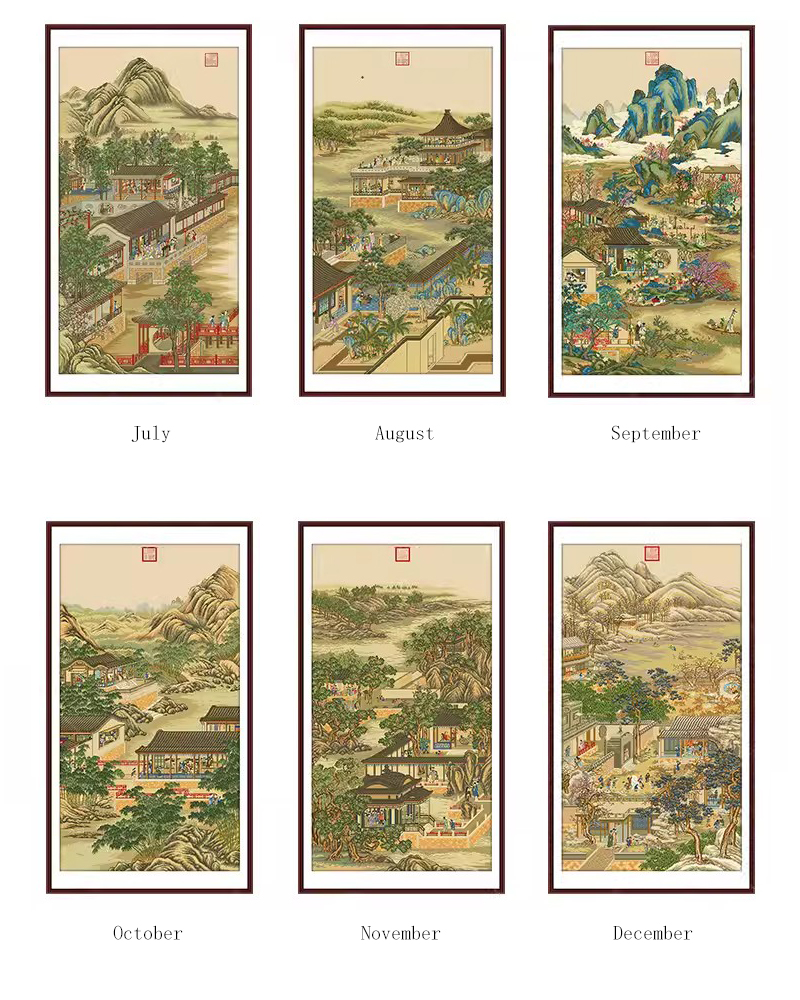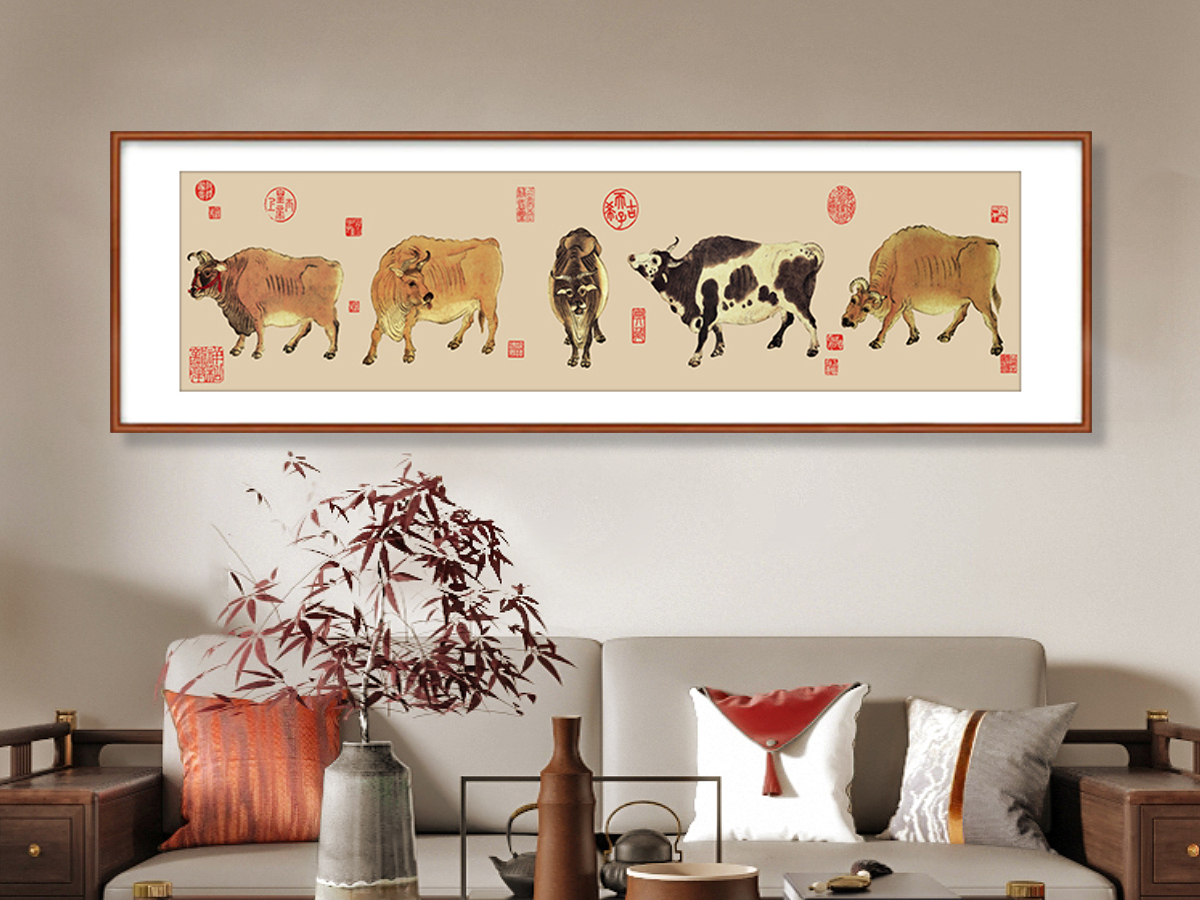The “Twelve Months of Recreational Activities of Emperor Yongzheng” is a remarkable creation by the court painter Giuseppe Castiglione in the Qing Dynasty. This set of works vividly depicts the daily life of Emperor Yongzheng, arranged in the order of the twelve months of the four seasons: spring, summer, autumn, and winter.

January: Lantern Appreciation
In the first month, the scene shows the emperor enjoying the sight of lanterns. The embroidered details would bring out the vibrant colors and lively atmosphere of the lantern festival, with various lantern shapes and the bustling crowd in the background.
February: Spring Outing
February is about the emperor’s spring outing. The embroidery could capture the beauty of the budding nature, the emperor strolling among the fresh greenery and blooming flowers, presenting a sense of relaxation and the rejuvenation of spring.
March: Peach Blossom Admiration
As the peach blossoms bloom in March, the embroidered work would highlight the delicate pink of the blossoms and the serene environment where the emperor indulges in the beauty of the peach orchard.
April: Wine-Cup Floating Ceremony
April features the traditional “wine-cup floating” activity. The 十字绣 could intricately depict the flowing stream, the floating wine cups, and the emperor and his attendants participating in this elegant and cultural event.
May: Dragon Boat Racing
For May, the excitement of the dragon boat racing is the focus. The stitches could show the powerful rowing of the boats, the splashing water, and the emperor observing the competitive scene from a vantage point.
June: Cooling Off
In the hot June, the embroidered picture of the emperor seeking coolness is charming. It might include elements like a shaded pavilion, gentle breezes, and the emperor in a laid-back pose, enjoying the moment of respite from the heat.

July: Qiqiao Festival
July is dedicated to the Qiqiao Festival. The embroidery could display the preparations and the festive mood of the occasion, with women praying for dexterity and the emperor observing the unique traditions.
August: Moon Appreciation
During the Mid-Autumn Festival in August, the embroidered tapestry would show the bright full moon, the emperor gazing at it, and the surrounding scenery bathed in the soft moonlight, creating a tranquil and poetic atmosphere.
September: Chrysanthemum Appreciation
The embroidered work for September would feature the beautiful chrysanthemums in full bloom. The emperor’s appreciation of these noble flowers and the autumnal charm of the garden would be brought to life through the stitches.
October: Portrait Painting
In October, the scene of the emperor having his portrait painted could be embroidered. It would show the emperor in a solemn pose and the artists at work, capturing a moment of imperial portraiture.
November: Zen Meditation
November presents the emperor in a state of zen meditation. The embroidery could convey the peaceful and spiritual ambiance of the meditation setting, with the emperor in deep concentration.
December: Snow Appreciation
Finally, in December, the emperor enjoys the snow. The embroidered tapestry would depict the white snow-covered landscape, the emperor in warm clothing, and the serene beauty of the winter scene.
This “Twelve Months of Recreational Activities of Emperor Yongzheng” cross-stitch work is not only a piece of art but also a window into the imperial life and cultural traditions of the Qing Dynasty. It allows stitchers and art lovers to immerse themselves in the historical charm and elegance of that era.








Leave a Reply